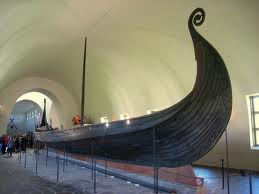On September 2nd, Picadilly Press publish 'We're Having A
Party' to celebrate their 30 years of publishing for children.
In one volume, they've brought together seven short stories - enough for one every day, or bedtime, or bath-time, for a week.
The book is illustrated by Emma Chichester Clark, and its stories are 'about everything from imaginary friends to following Mum’s orders, an amazing dog to unexpected neighbours...'
They have been written by a roll-call of excellent, acclaimed writers for children: Anne Fine, Jan Mark, Jacqueline Wilson, Helen Cresswell, Robert Swindells and Hilary McKay.
It costs £7-99, and would make a very good Christmas present. Or birthday present. Or unbirthday present, come to that.
What is my interest in this book? Well, that amazing dog... His name is Pedro, and I wrote him.
I've got even more attachment to him than that, because 'Pedro' is an almost entirely true story - apart from a little narrative tweaking here and there. Pedro belonged to my great-grandmother.
I was raised on stories of my parents' childhoods - 'Tell us about Christmas when you were little, Mom.' And then we heard about the orange in the stocking's toe, the white enamel bucket filled with nuts, the pink and white sugar mice. Or we heard about how her brothers fought - or how they dressed one brother up as a guy, and towed him round the streets in a buggy, begging for, 'A penny for the guy.'
My father countered with stories of damming brooks, or seeing spitfires flying overhead, or filling his mother's washing-boiler with tadpoles. (And hilarity ensued? Not with my grandmother, it didn't.)
They also told us stories from the previous generation - stories that their parents had told to them, about their childhoods. So we heard about our mother's mother going out to work at ten, or walking 12 miles every day to work in the glassworks.
My father told us how his father started work, in 1912, aged 12, and how he'd been an ostler with enormous great cart-horses. Another tale told of Great-Grandad's nightly attempts to put the cat out.
Great Grandad was always a little befuddled by bedtime, and every night my Grandad (who slept on the floor under the kitchen table) would watch as his father caught the cat, unlocked the many locks and bolts on the door, caught the cat again, put the cat outside - after a struggle involving the cat bracing its legs against the door-frame - closed and re-bolted and relocked the door, and finally started up the stairs to bed. Half-way up, he always met the cat coming down on its way back to the warm kitchen again.
Swearing, Great-Grandad would start the whole cat-wrangling performance again. What he didn't know - but which my young grandad sniggering with his brother under the table did know - was that the cat simply climbed the crumbling cottage wall and got into the upstairs room through a broken pane which had been blocked with cardboard. It pushed the cardboard aside with its head, jumped inside and scooted down the stairs, back to the fire. To have pointed this out, though, would have spoiled the nightly show.
I loved these stories. Another great favourite was the tale of my paternal Great-Grandmother (wife of the befuddled cat-dupe) and her corgi, Pedro. This was the woman and the dog who convinced several Polish emigrees that all the stories they'd heard were true, and the English were quite mad.
So when, in 1996, Picadilly asked me for a funny story, I wrote down the family story of Pedro. I can't decide whether it was my Great-Grandmother or the dog who was more eccentric, but I thought their story deserved to be passed on.
I never worried about dates when I sat listening to these stories, but I suppose the years when my Great-Gran doted on Pedro were either just before or just after the Second World War.
It would spoil the story to give away much of it here - but I will warn you that the ending is unavoidably sad. Dogs don't live for ever. I don't apologise for this, though. I think adults often try too hard to protect children from the harshness of the world. I've said in another blog that as soon as I was able to read a favourite book of animal stories for myself, I gravitated to the more tragic stories - whereas my father had only read me the lighter, more comic ones.
When I read stories aloud to my younger brother, I noticed that those he asked for most often were the ones that made him sob. I would say, "You don't want to hear that one again, do you? It made you cry." He would insist that he wanted, more than any other, to hear the sad story again. There was obviously something in the story that he needed and wanted to hear.
So I decided not to hide Pedro's sad end. After all, he had a very good and happy life. It might have been short - but his memory lives on!
 |
| 'We're Having A Party!' - 30 years of children's books |
In one volume, they've brought together seven short stories - enough for one every day, or bedtime, or bath-time, for a week.
The book is illustrated by Emma Chichester Clark, and its stories are 'about everything from imaginary friends to following Mum’s orders, an amazing dog to unexpected neighbours...'
They have been written by a roll-call of excellent, acclaimed writers for children: Anne Fine, Jan Mark, Jacqueline Wilson, Helen Cresswell, Robert Swindells and Hilary McKay.
It costs £7-99, and would make a very good Christmas present. Or birthday present. Or unbirthday present, come to that.
What is my interest in this book? Well, that amazing dog... His name is Pedro, and I wrote him.
I've got even more attachment to him than that, because 'Pedro' is an almost entirely true story - apart from a little narrative tweaking here and there. Pedro belonged to my great-grandmother.
I was raised on stories of my parents' childhoods - 'Tell us about Christmas when you were little, Mom.' And then we heard about the orange in the stocking's toe, the white enamel bucket filled with nuts, the pink and white sugar mice. Or we heard about how her brothers fought - or how they dressed one brother up as a guy, and towed him round the streets in a buggy, begging for, 'A penny for the guy.'
My father countered with stories of damming brooks, or seeing spitfires flying overhead, or filling his mother's washing-boiler with tadpoles. (And hilarity ensued? Not with my grandmother, it didn't.)
 |
| Dare you to fill this woman's boiler with tadpoles! |
My father told us how his father started work, in 1912, aged 12, and how he'd been an ostler with enormous great cart-horses. Another tale told of Great-Grandad's nightly attempts to put the cat out.
Great Grandad was always a little befuddled by bedtime, and every night my Grandad (who slept on the floor under the kitchen table) would watch as his father caught the cat, unlocked the many locks and bolts on the door, caught the cat again, put the cat outside - after a struggle involving the cat bracing its legs against the door-frame - closed and re-bolted and relocked the door, and finally started up the stairs to bed. Half-way up, he always met the cat coming down on its way back to the warm kitchen again.
Swearing, Great-Grandad would start the whole cat-wrangling performance again. What he didn't know - but which my young grandad sniggering with his brother under the table did know - was that the cat simply climbed the crumbling cottage wall and got into the upstairs room through a broken pane which had been blocked with cardboard. It pushed the cardboard aside with its head, jumped inside and scooted down the stairs, back to the fire. To have pointed this out, though, would have spoiled the nightly show.
I loved these stories. Another great favourite was the tale of my paternal Great-Grandmother (wife of the befuddled cat-dupe) and her corgi, Pedro. This was the woman and the dog who convinced several Polish emigrees that all the stories they'd heard were true, and the English were quite mad.
 |
| Original 1996 cover |
I never worried about dates when I sat listening to these stories, but I suppose the years when my Great-Gran doted on Pedro were either just before or just after the Second World War.
It would spoil the story to give away much of it here - but I will warn you that the ending is unavoidably sad. Dogs don't live for ever. I don't apologise for this, though. I think adults often try too hard to protect children from the harshness of the world. I've said in another blog that as soon as I was able to read a favourite book of animal stories for myself, I gravitated to the more tragic stories - whereas my father had only read me the lighter, more comic ones.
When I read stories aloud to my younger brother, I noticed that those he asked for most often were the ones that made him sob. I would say, "You don't want to hear that one again, do you? It made you cry." He would insist that he wanted, more than any other, to hear the sad story again. There was obviously something in the story that he needed and wanted to hear.
So I decided not to hide Pedro's sad end. After all, he had a very good and happy life. It might have been short - but his memory lives on!

.jpg)





.jpg)
.jpg)
.jpg)





.jpg)

.jpg)











 .
.






